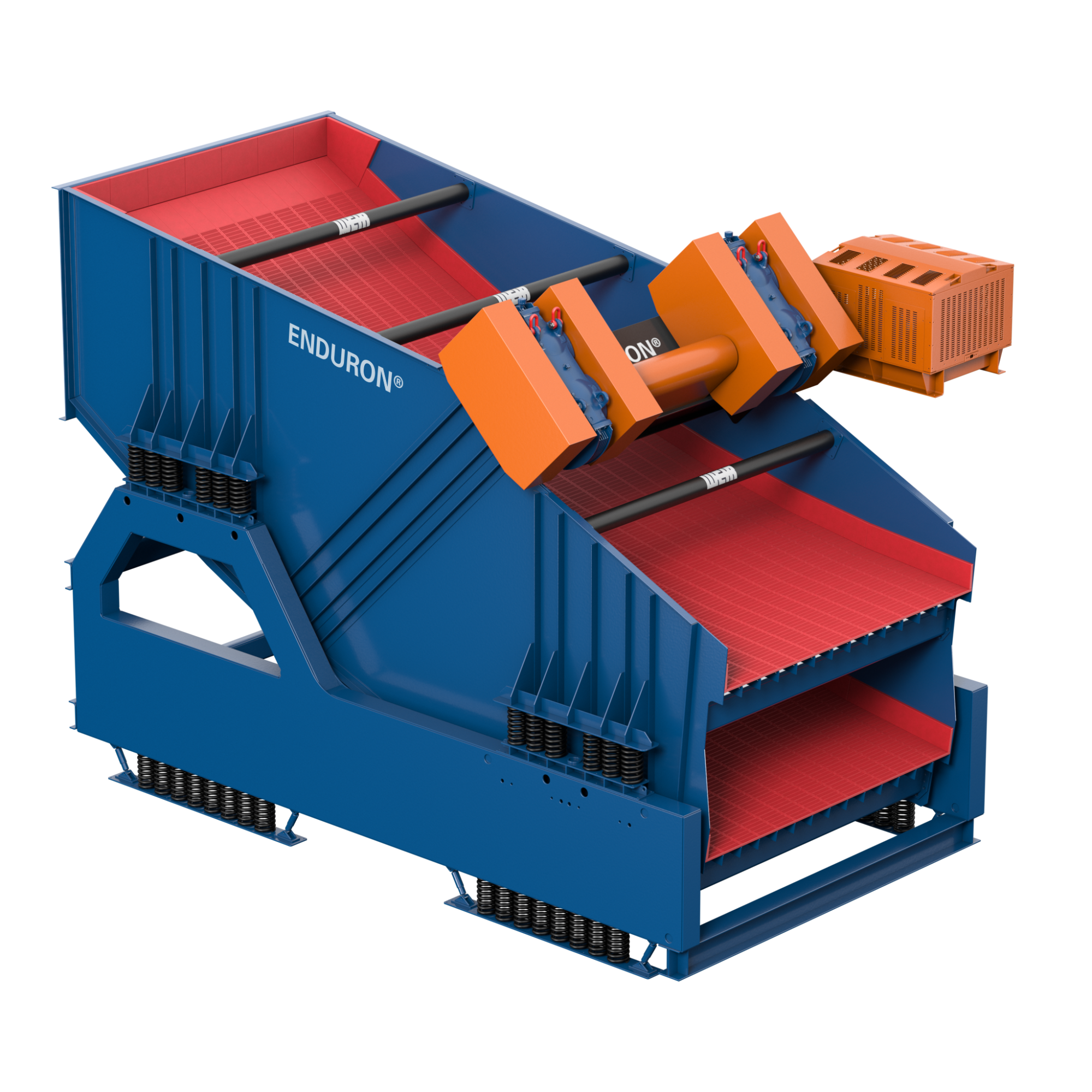Screening is one of the oldest mineral processing methods known, but in its most modern forms it is still being factored into the latest forward thinking flowsheet designs. A good example is from Weir, which has recently expanded its range of ENDURON® screens. Its ENDURON® ELITE screen, which was recently unveiled at MINExpo 2024, is a large, high-capacity banana screen, available in a range of sizes with the largest weighing in at close to 50 t.
With the mining industry increasingly focused on sustainability and Weir’s commitment to helping its customers reduce their energy consumption in the grinding circuit, Weir has developed its transformational flowsheet solution, which replaces traditional tumbling mills with HPGRs and vertical stirred mills. This solution needs screening both upstream and downstream of the HPGR, which produces high tonnage, fine material requiring small separation sizes. Notably, by screening HPGR discharge product at 1 mm, Weir’s transformational flowsheet only requires a single vertical stirred mill, delivering significant energy reductions compared to conventional grinding circuits.
The industry is also dealing with the challenges of declining ore grades and fewer large mines coming into operations, meaning that existing mines need to process higher tonnages, which, in turn, requires higher screening capacity.
This presents some design challenges; perhaps most significantly, Weir had to develop an exciter capable of driving a screen with a deck that spans 4.27 m. This has been a long and rigorous process that involved initially designing a range of exciters, building and testing prototypes and then commercialising a serial production version. Screens of this size typically require three exciters, but this increases the amount of deflection experienced in the exciter beam, resulting in heavy exciter beam designs. In contrast, the two exciters on the ENDURON® ELITE screens are mounted closer to the sideplates, which reduces the force acting on the middle of the exciter beam. Moving the exciters closer to the sideplates also reduces the localised bending moment at the beam and sideplate interface.
There are also operational benefits because it means there are less exciters to maintain on-site, which reduces downtime, routine inspections and inventory management.
Weir was recently awarded a £53 million contract to provide a transformational flowsheet for Barrick Gold’s Reko Diq copper-gold project in Balochistan Province, Pakistan, which includes 12 4.27 m x 8.54 m double deck ENDURON® ELITE banana screens driven by two ETX200 exciters. Weir told IM that this is further proof that top miners trust Weir to deliver critical products for their big greenfield projects.
During the project tender phase, Weir can test its customers’ material at its Venlo Technology Hub (VTH). It can accurately determine the HPGR discharge PSD, allowing it to select the correct screen size and configuration. Whereas most facilities use normal horizontal or inclined screens for testing, Weir has a pilot double-deck banana test screen at the VTH, allowing it to replicate the actual operating conditions more accurately.
Weir’s new ENDURON® ORBITAL vibrating screen is suited to lower throughput mining and sand and aggregate operations and has been designed to maximise service life and availability.
This has led Weir to opt for an all-bolted construction, removing all welding from the main screen body. Put simply, most screen failures are caused from high stress in welded joints, so eliminating these ensures a more reliable machine.
Weir has developed the ORBITAL screen with the same design specifications it used on its ELITE screens, meaning that it bridges the divide between typical sand and aggregate screens and large hard rock mining screens.
In other words, the ENDURON® ORBITAL screen fills an important gap in the market for smaller, lower tonnage mining operations. It is well suited to crushing circuits in both secondary and tertiary screening duties, as long as top size is limited to <150 mm.
It has also been engineered with a wide operating window, providing flexibility to change the screen settings in line with the operating conditions and eliminating failures related to natural frequencies often associated with vibrating screens.
Providing customers with a high level of flexibility was prioritised and has informed other aspects of the screen’s design. For instance, the ENDURON® ORBITAL screens can accommodate both modular flat decks and side-tension crown decks on the same deck structure.
Moreover, this modular screen construction extends to other parts of the screen; most of the components – decks, crossbeams, exciters, for example – are interchangeable within particular model sizes and, in some instances, across the C-series (circular motion inclined) and E-series (elliptical motion horizonal) screens.
The ENDURON® ORBITAL range of screens are EN 1009 compliant, which allows operators to access screen media easily in multiple deck applications, while the modular all-bolted design means various parts can be individually replaced without needing to strip the entire screen.
Further streamlining monitoring and maintenance, the screens can be digitally enabled, providing the operator with greater visibility of equipment health and performance, as well as providing the opportunity for process optimisation. Weir’s intelligent solution, NEXT, monitors bearing health, temperature, vibrations, acceleration, throw angle and overall screen health.
As miners strive to meet the growing demand for minerals in challenging operating environments, while at the same time trying to reduce their carbon footprint in line with their often quite ambitious targets, Weir says it is continuing to develop technologies to help them meet and exceed their exacting targets.











